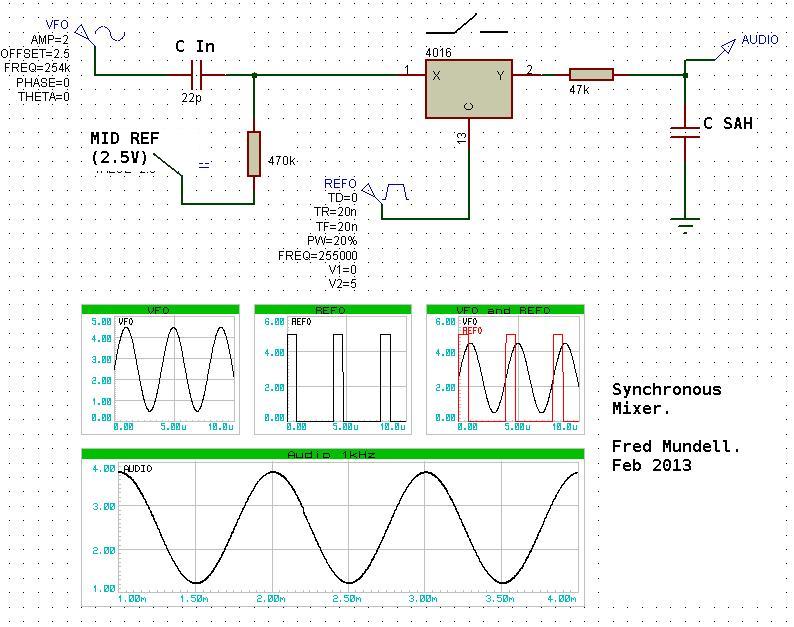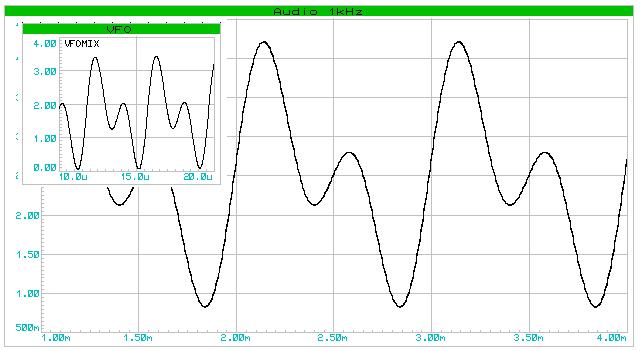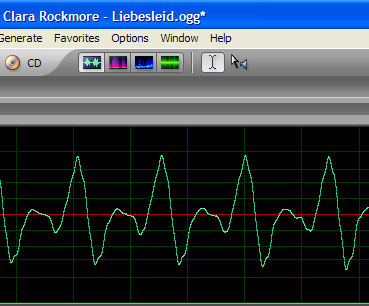WITH REFERENCE TO FOLLOWING REPLIES - THE WORD "NEW" IS A BAD CHOICE - RARELY (if ever) IS ANYTHING ABSOLUTELY "NEW".
SO PLEASE REGARD THE "NEW" AS A STATEMENT THAT I HAVE NEVER SEEN ANY SCHEME LIKE I PRESENT HERE PUBLISHED - I HAVE NEVER SEEN THIS SCHEME APPLIED TO ANY THEREMIN.
"NEW" or "NOT NEW" - I think this is the first time this scheme for THEREMINS has ever been PUBLISHED OR DISCLOSED.
BUT - IF I AM WRONG, IF ANYONE KNOWS OF A PRIOR PUBLICATION OF THIS THEREMIN IDEA, PLEASE LET ME KNOW!
IN SUCH A CASE I WILL ACKNOWLEDGE SUCH AN INDIVIDUAL AND CREDIT THEM WITH THIS IDEA!
The first posting on this subject started HERE but I moved it to this thread, as once again I was hijacking Dewsters thread! Sorry Dewster ;-)
(this first section is probably mostly waffle.. the real "meat" is down at the bottom..)
I have been exploring mixer topologies extensively recently - The Lev "clone" project led to this.. I even dug up some tubes and transformers and messed with them to try see what was happenning in the Lev mixer - Alas, I still cannot see a clear mechanism by which the frequency dependent behaviour occurs, so reverted to "top down" - as in, I know what I want - I dont know how Lev got it, so I must devise a way to get the same result even if through some other mechanism.... I achieved this before - But the circuit was way too complex - so exploring "new" ideas seemed the best route.
In fact, the irony is that the more "perfect" the mixer (as in, the closer to a true multiplier) the less useful it is musically - The waveforms from the oscillators do not carry enough interesting stuff, and even the harmonics present are attenuated in a true mixing process.
And this is where synchronous demodulation really scores - one turns the reference oscillator into a square wave, and shapes this to a triangle wave.. This triangle wave then drives a comparator, the other input going to a voltage that determines the output pulse width.. This output gates a CMOS switch, this CMOS switch has the variable oscillator as its input, and the other side is connected to a capacitor via a resistor (a sort of combined integrator / SAH).
If the PW is set quite short, one gets an audio difference waveform on the capacitor which is representitive of the waveform from the variable oscillator (I think any harmonics on this waveform are attenuated at 3db/octave) - One does not need harmonics on both the reference and variable signals - whats on the variable oscillator waveform comes out in the audio.
The above means that one can shape the variable oscillator waveform alone, and get this to influence the sound.. One can also get some wonderful waveforms by squaring the variable oscillator signal and doing the same PWM mechanism as applied to the reference oscillator - by varying the pulse widths of both one can produce triangle, square, pulse waveforms etc... Having two "channels", mixing raw analogue VFO waveforms with "processed" VFO waveforms, almost every possible waveform is achievable - and one does not lose the analogue changes (such as waveshape changes which occur as oscillators start to synchronise at the bass end) unless one wants to.. This is the big advantage - the main problem with mixed signal heterodyning of my past designs has been the loss of the analogue shape content, and the requirement to synthesise this - this new design gives, I think, the best of both worlds.
Because the above is all based on voltage control which determines the pulse widths, frequency dependent harmonics are easy to produce (simply drive this from a voltage derived from the VFO frequency).. The whole circuit uses one dual comparator, one HC4066 quad CMOS switch, a few R's and C's...
All the above is running in simulation, and I can play the sounds it produces - Its a long way from Lev's mixers topology, but I believe it can reproduce all the 'core' waveforms from his instruments (and many more, including quite pure sine waves if one wants that)... Need to add a few gyrators in the audio path to mimic the audio transformer charactaristics, and I think I could be there! ;-)
Fred.
Here is the most basic form: The narrower the sampling pulses, the lower the HF content on the audio signal - In reality I use a double track + hold sampling system which eliminates all HF (as in RF components - there are no "sum" components with this method, only the sampling frequency appears on the audio - and this is eliminated by double track+hold) on the audio regardless of pulse width.
Values given are probably not meaningfull - just patched together to show principle of operation.

This shows a more complex waveform from the VFO, and how this is reproduced at the audio difference frequency.. The circuit that produced this is slightly more complex than the circuit shown above - but not by much.. the circuit shown above will produce an almost identical copy, but has a few db's attenuation of the higher harmonics. The full circuit entirely eliminates the "fur" on the audio waveform, and gives almost perfect replication of the VFO waveform.

Note also that the above was "fiddled" by having the reference frequency 1kHz below the VFO frequency.. Normal operation (REF > VFO) the waveform is the other way round.. as in, the audio will be transposed horizontally.. this makes absolutely no difference to the sound, its just a phase relationship.
One can actually "square" either the VFO or REF, to use as a "gating" signal..
This whole scheme is a sort of "real time sampling" system perhaps more than a synchronous demodulation as I said before - there is actually no "mixing" or "modulation" occurring at all - In fact, Im not even sure that "heterodyning" applies - I think it does, but perhaps not in any conventional way - the "beat" is almost a deliberate "aliasing" perhaps...
THIS IDEA AND THE SCHEMATICS ETC RELATED TO IT ARE UNSUITABLE FOR ANYONE WHO DOES NOT UNDERSTAND SAMPLE AND HOLD CIRCUITS, AND FOR ANYONE NOT ABOVE BASIC ELECTRONIC HOBBYIST LEVEL.. YOU CANNOT EXPECT TO JUST BUILD THESE CIRCUITS AND HAVE THEM WORK WITHOUT UNDERSTANDING THEM AND DOING THE REQUIRED ADAPTATIONS TO FIT THE APPLICATION! << This warning was added on 3/29/2013 1:18:28 AM >>



